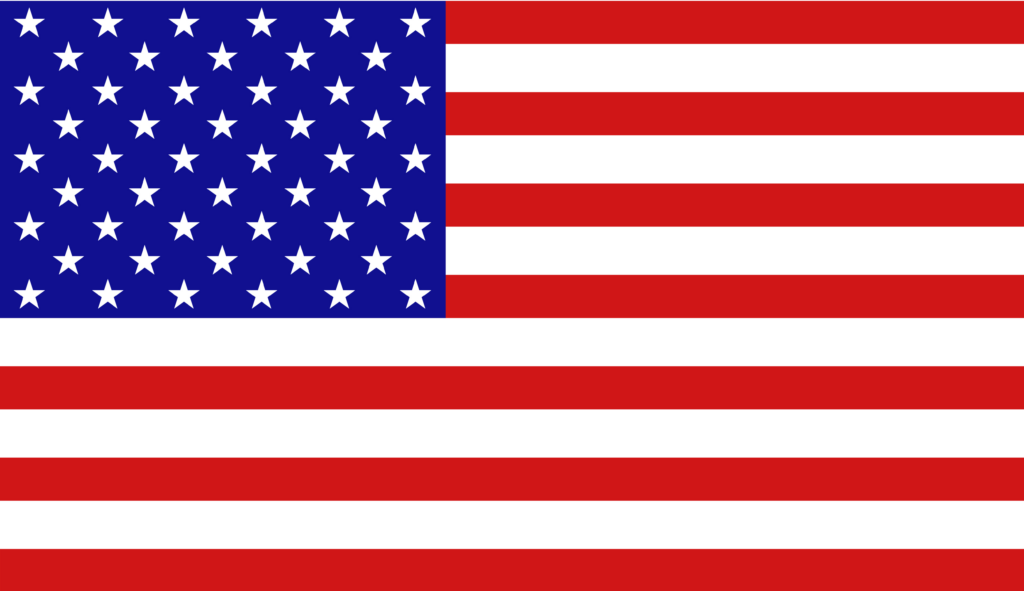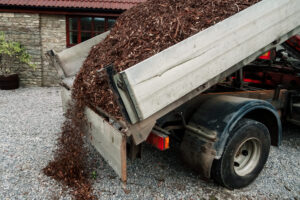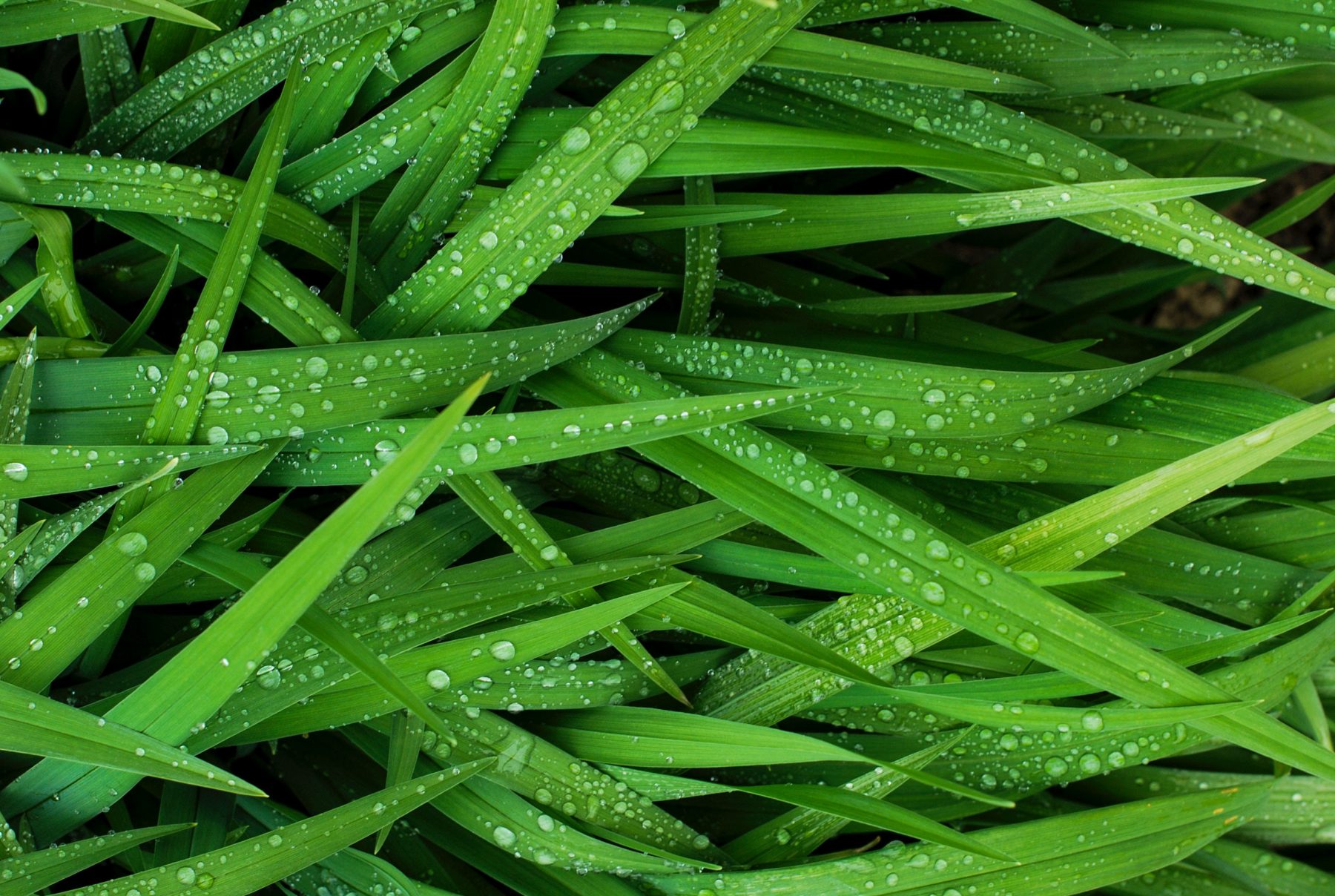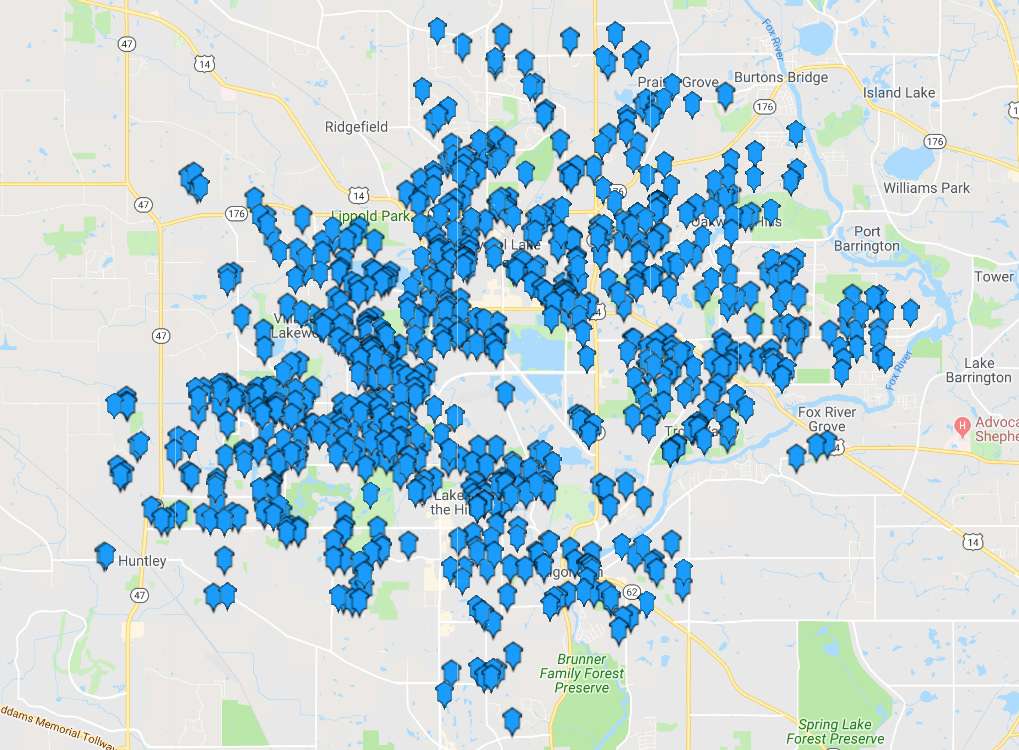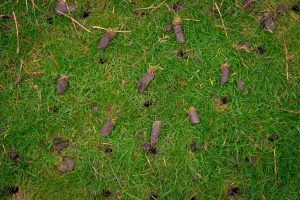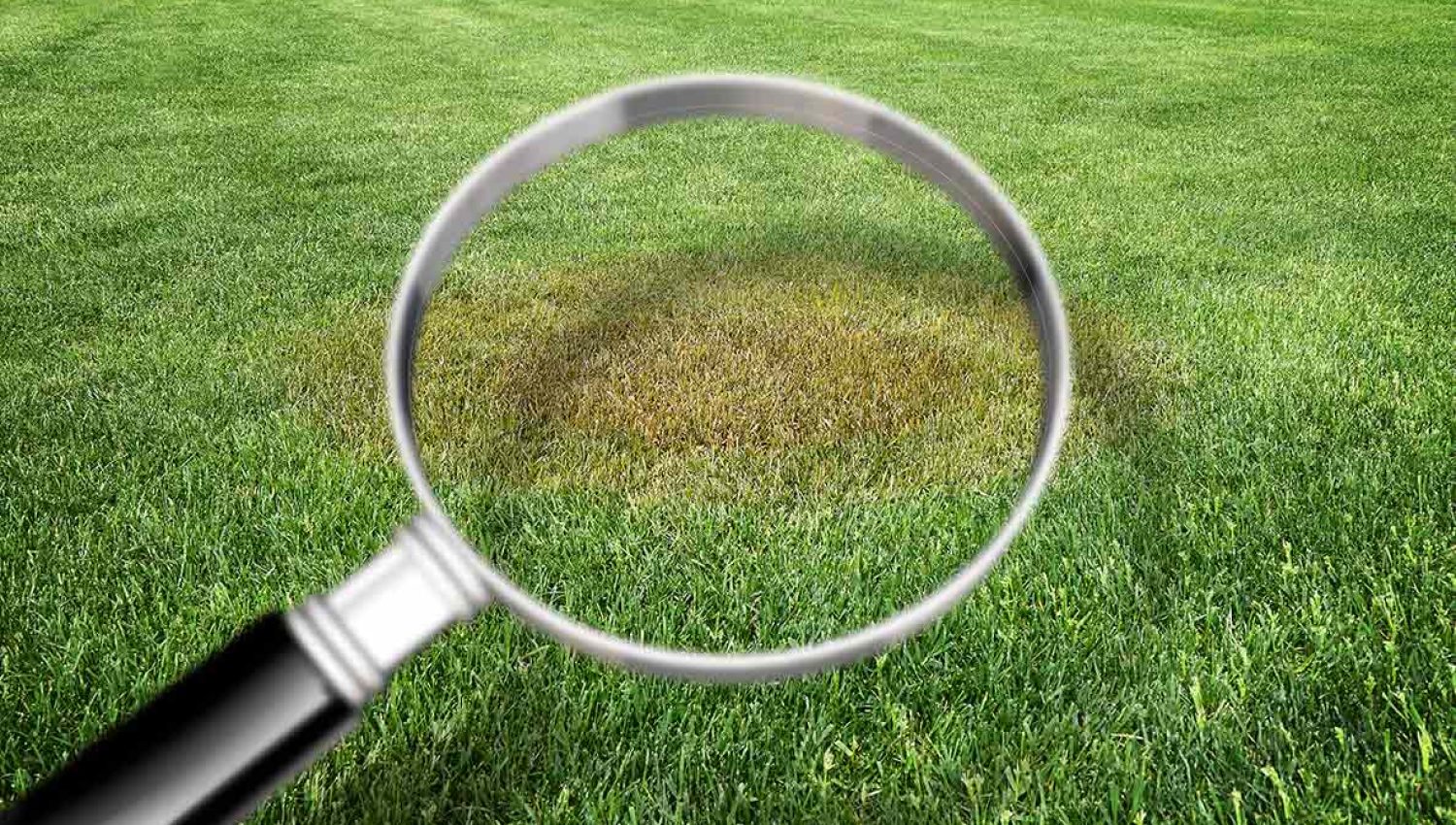
Identifying & Treating Brown Patch
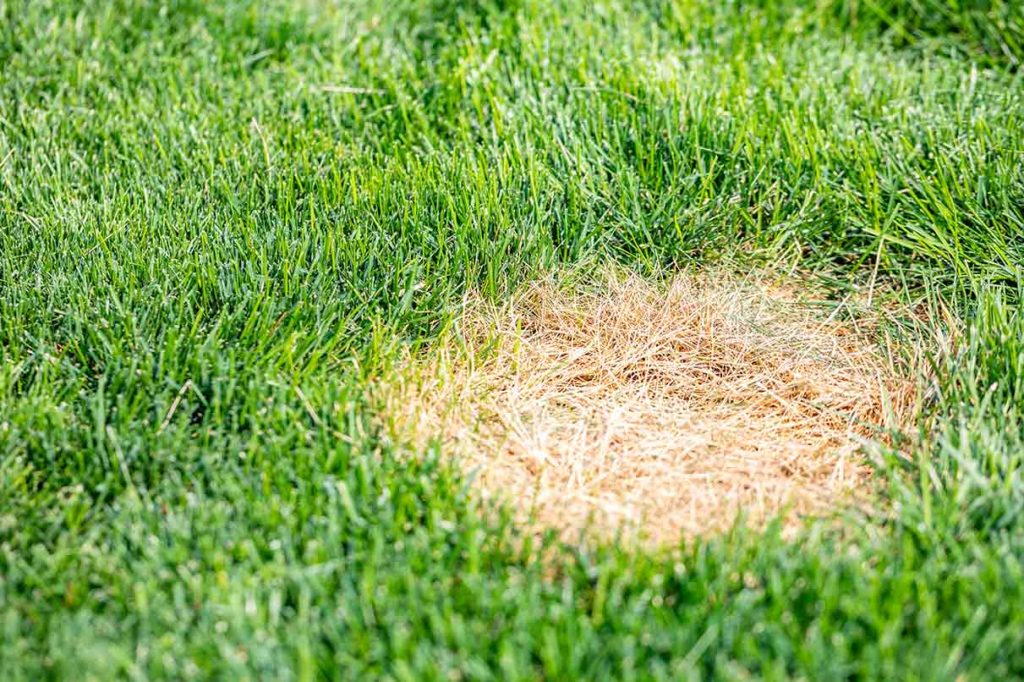
What Does Brown Patch Look Like
Brown patch is characterized by roughly circular patches of yellow-to-brown grass that can measure up to 3 feet long. The infected grass darkens and turns a yellow-brown color, with the inside of the patch appearing slightly sunken and lighter in color than the perimeter. You may also see dead or discolored leaves from trees or bushes near the patch.
The areas of grass infected by brown patch often start quite small, measuring only a few inches in diameter. Brown patch will first appear as just a few discolored grass blades, but those few blades turn into larger patches. It is when the damage becomes more widespread that it can be more easily identifiable. Unfortunately, controlling brown patch will be harder than preventing it, so it is best to keep a close eye on your lawn for any warning signs of brown patch. The following signs can be seen in grass that is infected with brown patch.
- Circular, brown patches
- Diameter: A few inches and 3 feet
- Smaller patches blending together
- Foliar lesions on grass blades
- Mycelium spreading in morning
- Gray smoke-ring perimeter
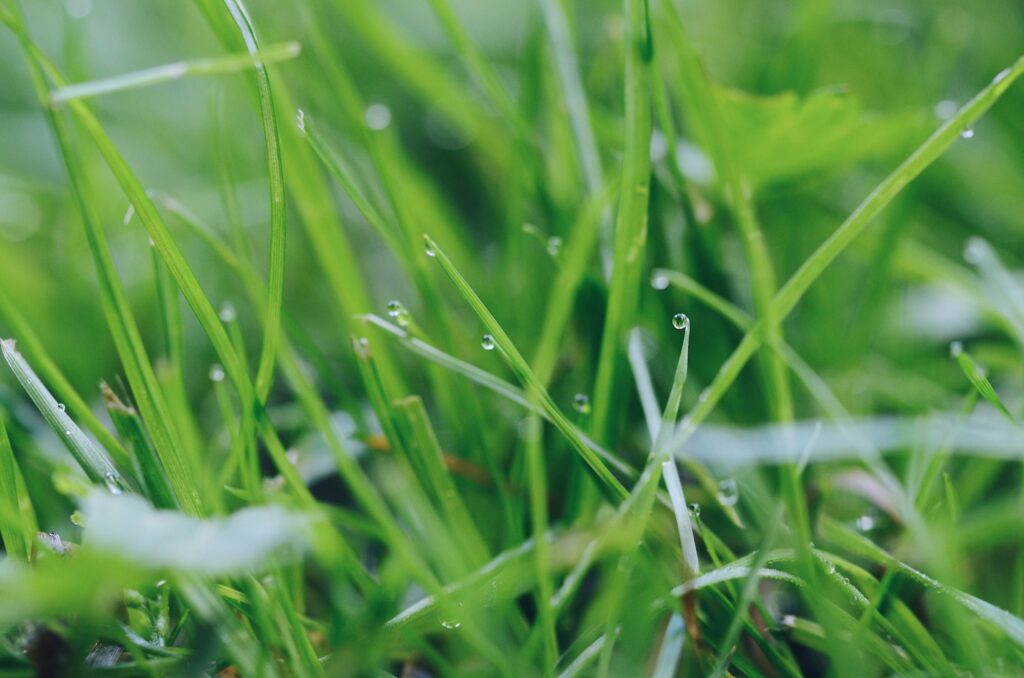
Brown patch is caused by a particular fungus called Rhizoctonia solani. This fungus thrives in moist and humid conditions, so it is most commonly seen during the wet months of spring and summer. It does not do well in cold or dry weather, and the infection often comes from other infected turf areas in your yard.
Thriving Conditions
Solani thrives in soil temperatures between 70 °F and 90 °F, and development of this fungus is most likely to occur when hot, humid days give way to cool nights. The humid environment creates damp lawns, and lawns that stay wet as temperatures fall at night are the ideal environment for brown patch to develop. Avoiding the following factors as much as possible will greatly reduce the possibility of an infection from Rhizoctonia or any other harmful fungal species:
- Poor lawn drainage
- Watering your lawn at dusk
- Overwatering
- Over-/under-fertilizing
- Drought stress
- Compacted soil
- Improper mowing practices
- Susceptible grass species
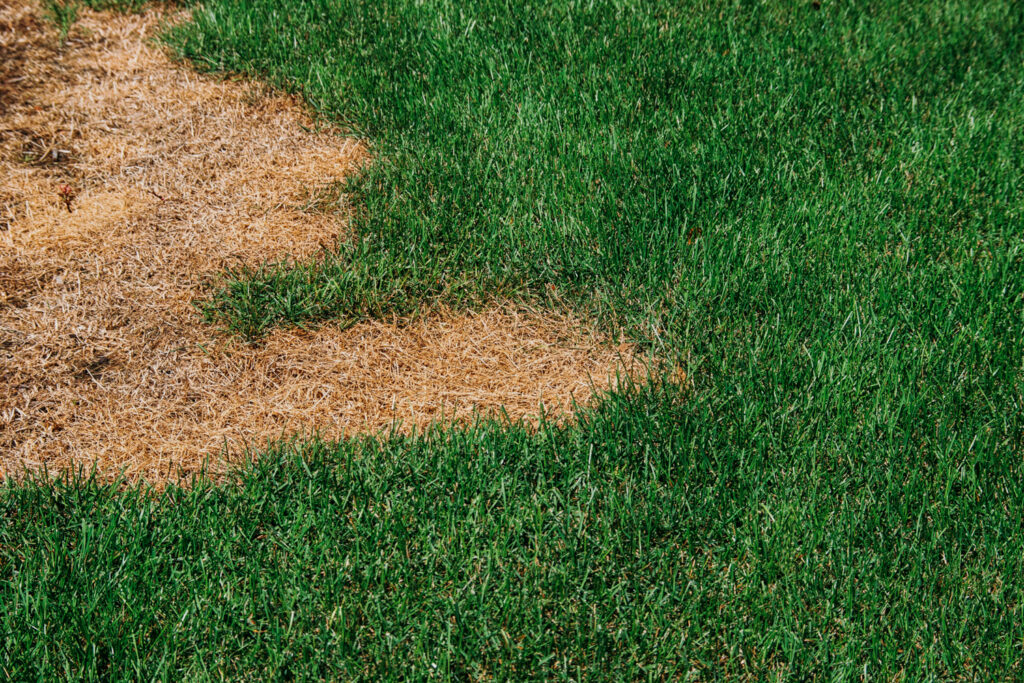
Brown patch spreads via radial expansion, with infected grass blades touching and infecting the surrounding turf. The R. solani fungus does not produce spores like you would see from other fungal diseases, but it does produce a cotton-like mycelium that can be seen on infected lawns during the early morning hours. Other factors, such as excessive foot traffic and unclean/infected lawn care equipment, are also common culprits.
The Rhizoctonia species of fungus is quite hearty, and it goes dormant in winter. Even if signs of brown patch are not present on your lawn, the fungus is capable of living in the soil for many years without you noticing it. When conditions are optimal, the fungus will leave the soil level and begin spreading across grass blades.
Does Brown Patch Kill Grass?
Foliar diseases, such as brown patch, limit their attack to only the leaves of plants. Since brown patch does not affect the roots or crowns of your grass, it would not be completely accurate to say that brown patch kills lawns. Brown patch will, however, weaken the grass blades in your lawn and allow other issues to arise, such as harmful weeds that will kill your grass! This is why it is best to stay vigilant and try to prevent any type of situations in your lawn that could breed a fungal infection.
Ready To Sign Up? Get Your Quote
Looking to get signed up for service? Learn more about our current services & quickly get a quote for your property.
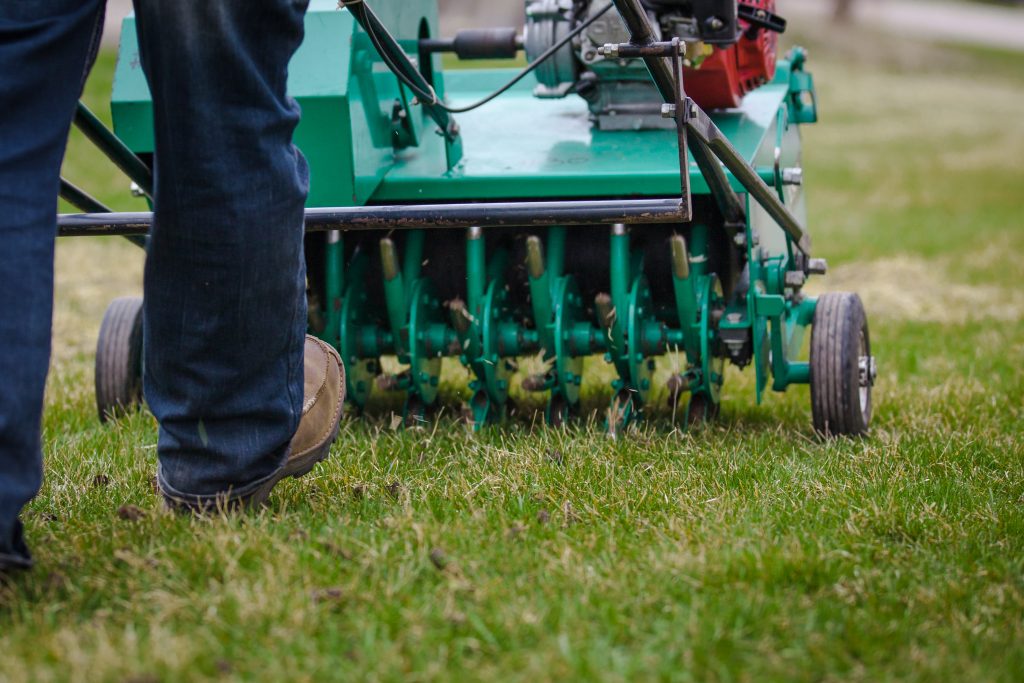
How To Control Brown Patch
Though brown patch is one of the most common lawn diseases you are likely to encounter in Illinois, preventive control is actually quite effective against the spread of the R. solani fungus. This fungus seeks out lawns that are struggling, so simply maintaining a healthy lawn will go a long way in preventing the brown patch disease. See the tips below for specific lawn care tasks that deter brown patch:
Aerate Your Lawn:
Core aeration helps with many lawn care issues. Compacted soil and poor drainage are two leading causes of brown patch, both of which can be helped by core aeration.
Fertilize Properly:
Brown patch can be caused by over-fertilizing your lawn, so it’s important to make sure you are not applying too much fertilizer. Make sure you are using appropriate amounts of nitrogen early in the growing season by reading labels carefully.
Sharpen Mower Blades:
Dull mower blades will rip and tear at grass blades, creating an environment where fungal infections like brown patch can thrive. Sharpening and wiping off blades will ensure a clean cut that promotes healthy grass growth.
Water Infrequently & Early:
Water early in the morning to give your grass time to dry out before temperatures cool off later in the day. Also, try to water only when necessary, as overwatering promotes favorable growing conditions for the R. solani fungus.
Maintain Healthy Lawn Height:
Taller turf holds more moisture and is more susceptible to disease, and grass that is too short will not hold enough nutrients. Be sure to remove only the top 1/3 of your lawn when mowing to maintain proper height.
Use Professional Disease Control:
Lawn care professionals know how to apply chemical fungicides to lawns that are already showing signs of infection. Fungicides used to treat brown patch should contain azoxystrobin, pyraclostrobin, or fluoxastrobin. Call your local lawn care professional today to help save your lawn from brown patch!
Start Your Quote Today! Getting Started
Get your weekend back & simplify your life this season. Trust Elite Lawn Care for your Lawn Care, Landscaping & Snow Removal needs.
-
1Choose Your ServicesChoose the services your property needs throughout the year.
-
2Set Up & Finalize Your AccountFill out the form & one of our team members will contact you.
-
3Discover The DifferenceServices are automatically scheduled, completed & billed.

